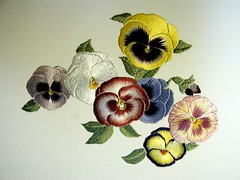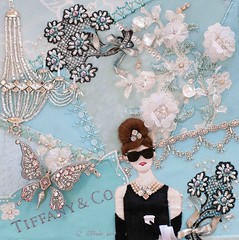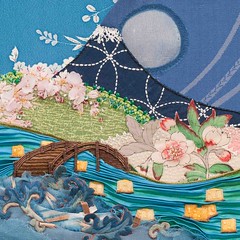When I launched my first online course last February, I decided to choose my Hari-kuyo needlebook as the course subject.
I had figured out all the details of the book and could make it in my sleep. What I really needed to figure out was all the other elements that go into offering a course: pricing, supplies/kits, videography, document transfer, communications, registration, etc.
I expected to have maybe 20 students, perhaps 30. Actual enrollment for that first class was double my most optimistic estimate and I was challenged to accommodate the scale of that request.
And now, here I am again, one week from launching Round 2 of the Needlebook E-Course and having just finished teaching the class to my local Embroiderers' Guild.

By the time I remembered to take pictures yesterday, there were only a few left of the original 20 women who had taken the course.
Like most things in life, what I had originally set out do with my initial class offering was met and then exceeded. I think I've realized that the actual making of the needlebook may be a draw for some; but the act of honoring our needles is what really has the appeal.
And I have been touched by all the methods in which bookmakers from all over the world have made their books their own, and added their own personal touches.

Barbara Meger took the basic original kit and focused largely on the golds and oranges. After finishing class yesterday, she had created a book for her needles that coordinated beautifully with her October sewing set: a black felt pin cushion, a scissor holder with a witch, and an ort holder made from Fall-colored fabrics.



























































